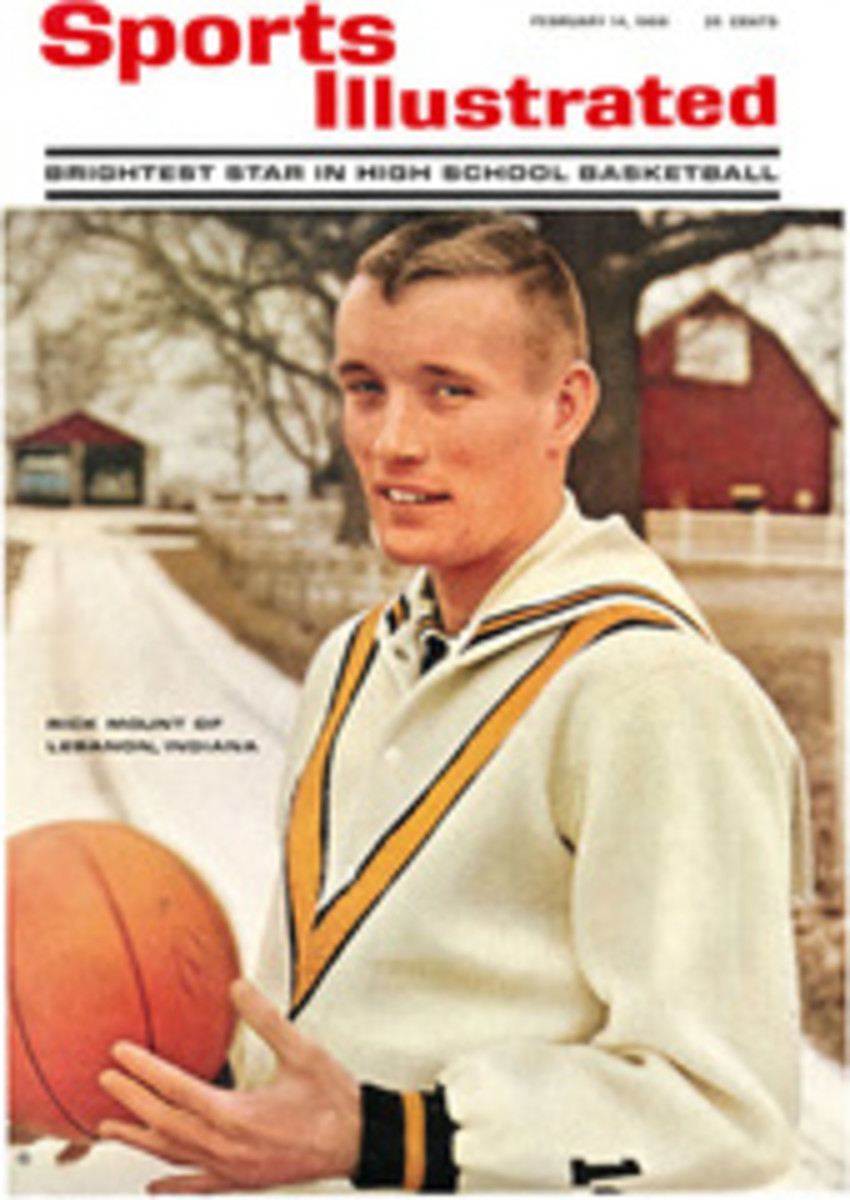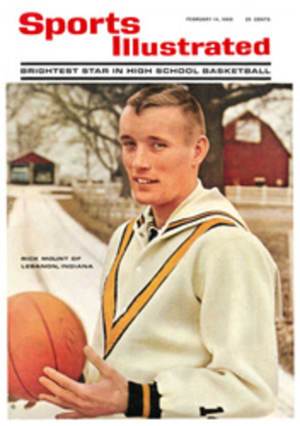
DEVILISH STROLL IN THE WOODS
On winter weekends from December to April, when most upland bird hunters are sitting by a fire and dreaming about the season just passed, an intrepid group of gunners on Long Island defy snow, sleet and freezing temperatures to shoot around a sophisticated "quail walk"—a woodsy clay-target game called Laurel Guns. Fingers stiff and noses red, these diehards—most of them high-scoring skeet shots—are doing well if they manage to break as many as 14 of the 25 targets offered on this unusual and challenging course. Designed by James French Baldwin, a metallurgist from Locust Valley, N.Y., the walk is laid out in 10 hilly acres of laurel, swamp maple, elm, tulip and oak trees behind Baldwin's colonial house. What makes Laurel Guns so difficult is that most of the shots offered very nearly approximate the toughest chances encountered in the field.
Laurel Guns is a kind of revolt against the orthodoxy of trap and skeet. It has been said that skeet offers excellent practice for the field shooter, but in reality formal skeet is too predictable a game—the targets always follow the same fixed angles—to simulate the real thing. Trap offers a greater variety of angles, but all of the shots are going-away. While there are several other clay-target sports that come close to live-bird shooting—among them duck and pheasant towers, quail and grouse walks, rabbit runs and "walk-up" or covey-rise games, in which camouflaged traps are tripped at a distance so that the birds appear without warning—only something called Crazy Quail rivals Laurel Guns for hellish verisimilitude.
Invented in Texas, Crazy Quail has the trap machine mounted on a revolving platform hidden in a pit 22 yards or more in front of the shooter. The trap operator can, at the command "Pull," throw a bird at any degree of the compass he chooses. John Madson, a conservationist who shoots Crazy Quail on John Olin's Nilo Farms in Illinois, considers it an "inherently wicked" pastime. "Games are supposed to be for fun," says Madson, "but I no longer shoot Crazy Quail for fun—I shoot it for mad. It's the only shooting game in which the clay target breaks the shooter."
But if Crazy Quail is wicked, Jim Baldwin's Laurel Guns is devilish, demoralizing and guaranteed to bring out the worst in a shooter. There are on-coming, crisscrossing and going-away shots. There are targets that simulate a pair of mallards dropping through a canopy of branches into a decoy set, and spread targets that fly on an erratic course barely inches above the laurel like a covey rise of bobwhite quail. Grouse rocket out of the brush, and high doves are visible for only an instant before they duck out of sight behind a thick oak. And there is a single target thrown from a trap atop a 32-foot tower that must be broken at a distance of 50 yards just before it sails into the branches of a tulip tree.
The idea for Laurel Guns came from a similar shooting course designed by Robert Huntington in Oyster Bay, N.Y., and since pushed aside by developers.
"What I wanted," says Baldwin, "was a setup where leads and angles could not be memorized, one in which it would be impossible to groove yourself like the good skeet shot does. I tried to use the existing terrain as a prime tactical factor to work against the shooter just as thick alders work against the woodcock gunner and sharp briers hamper the pheasant hunter."
As all of the regulars who shoot at Laurel Guns (membership is private and each shooter pays $3.75 a round for shells and targets) will attest, Baldwin has succeeded admirably. Following the contours of the wooded hillside behind his home, he bolted traps to creosoted wood platforms and placed them strategically so that the targets would fly out into the open through narrow apertures in the trees and brush. The shooter does not see the targets until they are at least 15 yards from the traps and sailing along at top speed. No two targets ever fly quite the same path. Says Paul Denaga, who operates the traps for Laurel Guns: "Just the way you position the throwing arm of the machine can change the spread or elevation, sometimes drastically. Three targets at the same station can come out easy, hard or awful. Sometimes the machines are a bit sluggish on cold days and the targets start coming out nice and slow. Then I make a few adjustments and, without warning, the next shooter gets an entirely different target. Then there are tricky winds that make the birds dip or rise just when a shooter is right on them. Baldwin has the springs on most of the traps wound up so tight that at several stations it takes some shooters three or four turns before they even see the targets."
Every year, as the regular shooters begin to score up around 20 or so, Baldwin "makes a few changes to deflate those egos." Last year he installed the tower, which he admits has caused some grumbling. "I like to think of it as a high passing shot at, say, a honking Canada," says Baldwin, "but some of the boys insist that one doesn't shoot geese very often through the trees." Baldwin also added two walking stations, bringing the total to four. At a walking station, the shooter must be moving down a path before the targets are thrown. "What you need at these stations is two left feet," says Baldwin. "You kind of shuffle along in a double-step, trying to keep your left foot forward so you'll be ready for a snap shot at a target flashing through the brush. But Paul seems to have a talent for throwing the targets at precisely the wrong moment."
There are 12 stations in all, and each is named after a regular shooter who has shown it to be his special nemesis. Some examples:
•Gubelmann's Gloom (Oyster Bay Industrialist Walter Gubelmann). A single target simulating a pheasant coasting silently downhill. Barely visible over the laurel, it must be nailed at 30 yards before it darts behind an elm so full of shot holes that the tree looks like it had been attacked by an army of angry woodpeckers.
•Delafield's Dred (Con Ed Vice-President Charles Delafield). A single target resembling a jet-propelled woodcock that leaps at the shooter through a screen of laurel and must be broken at 12 yards, directly overhead, using an exaggerated backbreaking swing.
•Slater's Slaughter (Alexander Slater, secretary of Fanny Farmer). High, sharply angling ducks flying in a wide V that must be broken at 30 and 35 yards.
•Ridder's Ruin (Eric Ridder, a publisher and the co-skipper of the 1964 America's Cup winner Constellation). A walking double in which a pair of quail fly at brush-top level from left to right, angling away from the shooter at 30 to 35 yards.
About the only thing Baldwin has not done on his shooting course is wire it for sound. "It would be fascinating," he says with a gleam in his eyes. "We could have quacking ducks, cackling pheasants and whirring grouse. But then there are enough distractions here. If coughing, nose-blowing and scuffling dry leaves do not unnerve a shooter riding a hot streak, we just talk him into goose eggs." More than one shooter has watched two targets fly untouched out of range as his gun went "pfff, pfff." Someone had slipped a few blank shells into his pocket.
Sipping on a steaming cup of glogg after a recent Sunday-morning shoot, Eric Ridder talked about Laurel Guns. "No artificial target game is quite the same as actual field shooting," he said. "But you won't find anything that comes closer than Baldwin's layout. The variety of shots and the thick cover and those lovely, awful little birds skittering through the trees—it's pretty challenging. I must admit that it gives us all something to worry about during the long cold winter."
ILLUSTRATION
NICHOLAS SOLOVIOFF
ILLUSTRATION
NICHOLAS SOLOVIOFF
Bundled up against the chill winter air, Jim Baldwin checks his shotgun as another shooter swings hard on a clay pigeon flitting through the tall trees.
ILLUSTRATION
NICHOLAS SOLOVIOFF
While his companions do their best to unnerve him, a shooter bends backward trying to swing on a fast-rising target leaping away over the laurel.

